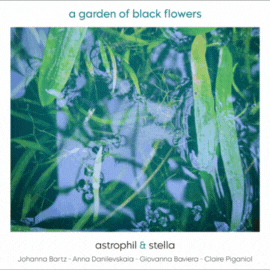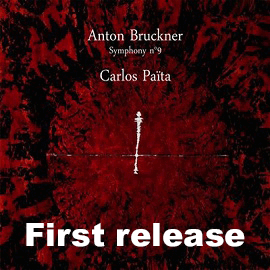Dieses Debutalbum der jungen spanischen Geigerin Maria Dueñas beim Label erklärt sich aus der besonderen Rolle, die das Konzert von Beethoven bereits in ihrem Leben gespielt hat. So lag es nahe, dieses ins Zentrum des Albums zu stellen. Gleichzeitig wollte sie ihm mit eigenen Kadenzen eine weitere persönliche Note geben. Daneben hat sie zum Vergleich Kadenzen früherer Zeiten zum ersten Satz des Konzertes eingespielt. Und da diese aus unterschiedlichen Epochen stammen, hat sie jeweils eine weitere Komposition eines jeden dieser Komponisten ebenfalls aufgenommen.
Das Konzert von Beethoven ist denn auch der Glanzpunkt dieser Einspielung. Hier findet Dueñas den passenden Ton und Charakter. Ihre Anlage des Werkes ist dem melodischen Charakter gewidmet und damit kann sie überzeugen. Mit fast 50 Minuten Spieldauer legt sie eine der längsten mir bekannten Einspielungen vor. Das mag am Tempo oder auch an der Dauer ihrer eigenen Kadenzen liegen. Aber ihr und den Wiener Symphonikern gelingt eine spannungsreiche Interpretation ohne Durchhänger. Ihre Kadenzen bieten ihr die Möglichkeit, ihre ausgeprägten Klangvorstellungen darzustellen. Doppel- und Dreifachgriffe, ausgeprägte Triller bieten ihr neben anderem auch die Möglichkeit, sich technisch zu profilieren. Sie hat Lösungen gefunden, die modern sind und doch auch dem Wesen von Beethovens Musik Respekt zollen.
Ihre eigenen Kadenzen und die fünf weiteren eingespielten bieten eine hochinteressante Zeitreise. Man mag jede einzelne mit Gewinn und Genuss hören und kommt dann vielleicht doch zu dem Ergebnis, dass es Gründe gibt, warum sehr oft die Kadenz von Kreisler bevorzugt wird. Maria Dueñas gibt jeder Kadenz eine Persönlichkeit und gestaltet sie charaktervoll.
Zwischen das Konzert und die ausgekoppelten Kadenzen wurden die anderen Werke gesetzt. Hier ist der Eindruck ein wenig zwiespältig. Gerade in den beiden ruhigeren ersten Beiträgen, dem Adagio aus der Symphonia concertante von Spohr und dem Wiegenlied von Ysaÿe gelingt es Dueñas zwar auch sehr schön, den getragenen und sanften Charakter zu kultivieren, aber als Dreingabe wird ein zu kräftiges Vibrato dazu gereicht. Auch in anderen kürzeren Werken zeigt Dueñas, dass sie mit Kraft, ausgeprägtem Legato einem Portamento nicht unähnlich, und kräftigem Anstrich Intensität ausdrücken möchte. Zwar bietet diese Ausführung eine Interpretationsidee und nicht nur virtuoses Gehabe, aber diese Verzuckerung trifft nicht meinen Geschmack.
Manfred Honeck führt die Orchestermusiker in den Aufnahmen der ersten CD mit prägender Hand durch die Partituren und gleichzeitig aufmerksam gegenüber der Solistin. So bieten die Musiker der Wiener Symphoniker hier eine geschlossene und markante, vernehmliche Stimme, ohne die Geigerin zu übertrumpfen. Der Klang ist durch die Aufnahme gehaltvoll und dicht angelegt, was man mögen mag, aber nicht muss.
So bietet diese CD sehr erfreuliche Momente und auch solche, die auf weniger Zustimmung stoßen.
This debut album of the young Spanish violinist Maria Dueñas is explained by the special role that the Beethoven concerto has already played in her life. So it was obvious to put it in the center of the album. At the same time, she wanted to give it another personal touch with her own cadenzas. In addition, she recorded cadenzas from earlier times for the first movement of the concerto as a comparison. And since these come from different eras, she recorded another composition by each of these composers as well.
The Beethoven concerto is the highlight of this recording. Here Dueñas finds the right tone and character. Her arrangement of the work is dedicated to the melodic character and with that she can convince. With almost 50 minutes playing time she presents one of the longest recordings known to me. This may be due to the tempo or even the duration of her own cadenzas. But she and the Vienna Symphony Orchestra succeed in an interpretation full of tension without sagging. Her cadenzas offer her the opportunity to display her distinct tonal ideas. Double and triple stops, pronounced trills, among other things, offer her the opportunity to distinguish herself technically. She has found solutions that are modern and yet also pay respect to the essence of Beethoven’s music.
Her own cadenzas and the five others recorded offer a highly interesting journey through time. One may listen to each one with profit and pleasure and then perhaps come to the conclusion that there are reasons why very often Kreisler’s cadenza is preferred. Maria Dueñas gives each cadenza a personality and shapes it full of character.
Interspersed between the concerto and the disengaged cadenzas were the other works. Here the impression is a bit ambivalent. Especially in the two quieter first contributions, the Adagio from Spohr’s Symphonia concertante and the Lullaby by Ysaÿe, Dueñas succeeds beautifully in cultivating the sustained and gentle, but as a trifle too strong a vibrato is added. In other shorter works, Dueñas also shows that she wants to express intensity with power, pronounced legato not unlike a portamento, and strong vibrato. While this performance offers an interpretive idea and not just virtuosic posturing, this sugarcoating does not meet my taste.
Manfred Honeck leads the orchestral musicians in the recordings of the first CD through the scores with a formative hand and at the same time attentive to the soloist. As a result, the musicians of the Vienna Symphony here offer a cohesive and distinctive, audible voice without overpowering the violinist. The sound is substantial and tightly laid out through the recording, which one may like, but need not.
Thus, this CD offers very enjoyable moments and also those that meet with less approval.

























